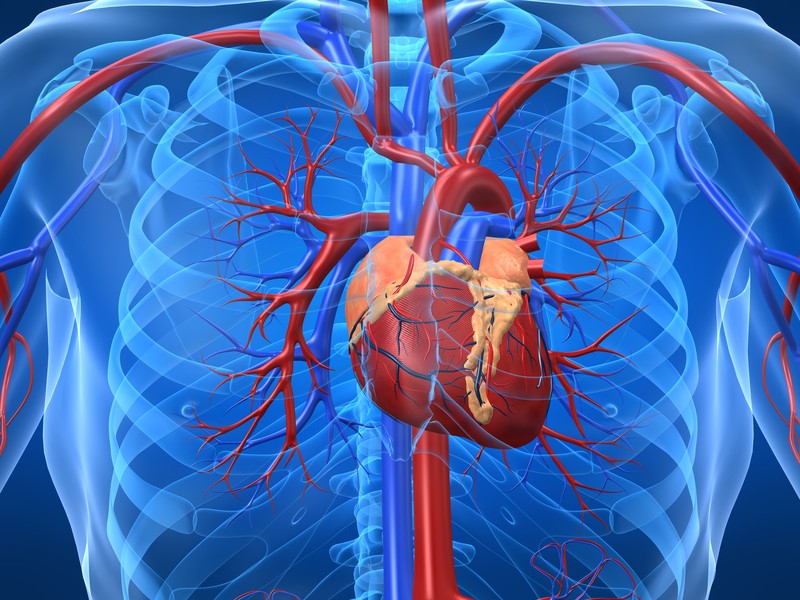Implementation of the 24/7 project for cardiac care at select specialty hospitals across the country has increased hope for treating severe heart attacks, said a board member of the Iranian Society of Interventional Cardiology.
“The new project has been launched in 53 specialized and sub-specialized medical centers across the country where services are offered round the clock for people at risk to reduce delay and provide efficient care,” said Dr Seifollah Abdi, at the first cardiology conference of Amol University of Medical Sciences in northern Mazandaran Province on December 8.
The direct access to primary coronary intervention services will allow patients suffering from acute heart attack and in need of cardiac revascularization, to bypass emergency and be brought directly from the ambulance for assessment and treatment in the cardiac ward by the team of general cardiologists, interventional cardiologists, and two technicians for follow-up medical care including angiography and angioplasty, IRNA reported.
“Immediate care ensures patient’s survival and preserving more of the healthy heart tissue,” Abdi noted, adding that a number of medications have also been considered for cardiovascular patients and have been effective.
Reports from hospitals involved in the project say that patients brought there with a critical heart condition showed a significant drop in mortality and side effects following a heart attack.
CVD Leading Cause of Death
Cardiovascular diseases (CVD) are the leading cause of premature death among Iranians claiming 51% of the annual death rate. The rate of premature deaths due to CVD remains high despite the national document on prevention of non-communicable diseases (NCDs) calling for reducing CVD by 25% by the end of 2025.
Several measures have been taken during the past three years to increase public access to quality treatment and control strategies for heart disease and about 50% of the country’s hospitals have been equipped with specialized cardiovascular wards.
The age of stroke or heart attack in Iran is 10 years below global average, according to the Health Ministry. Among the 95,000 people who lose their lives to premature death from CVD, 35,000 are under 55 years old, although 50% of such cases can be prevented through measures such as healthy lifestyles, timely checkups, and exercise.
Experts have warned that the number of people with cardiovascular diseases will double in the next five years if the risk factors are not controlled.
“If the government manages to provide specialized teams at every hospital in the country, it could produce remarkable progress in preventing disabilities and increasing survival rates,” Abdi stressed.
Preventive Screening Project
The Health Ministry is executing a project to help prevent heart attacks and strokes in men and women aged over 40 years.
Under the plan, the target group will be screened for cardiovascular diseases, and high-risk groups will receive the ‘polypill prescription’ to prevent potential fatal attacks.
“The project will continue for the next 10 years,” Dr Alireza Moghisi, deputy head of the ministry’s Non-Communicable Diseases Department, told ISNA.
People at risk of cardiovascular complications tend to have high blood pressure, high blood sugar, too much fat around the waist, low HDL (“good”) cholesterol, and high triglycerides for about 10 years before experiencing a heart attack or stroke; therefore, screening people over 40, a critical age for such complications, would help in preventing potential fatalities.
As part of Iran’s Package of Essential NCD Interventions (known as IraPEN), the project was piloted in several provinces.
“Preliminary evaluations following the trial runs are completed, based on which an executive protocol has been directed for implementation nationwide,” said Moghisi.
IraPEN has been successfully implemented in Maragheh in East Azarbaijan, Naghadeh in West Azarbaijan, Baft in Kerman, and Shahreza in Isfahan province.
Moghisi also said screening for three prevalent cancers cervical, breast, and colon, has also begun.
Non-communicable diseases take a long time to reveal themselves. Smoking is a good example of how long it took scientists and health experts to realize the destructive effect of the tobacco boom in the 1950s.
“It is essential to start screening now, and correct people’s lifestyles before it is not too late,” Moghisi maintained.


